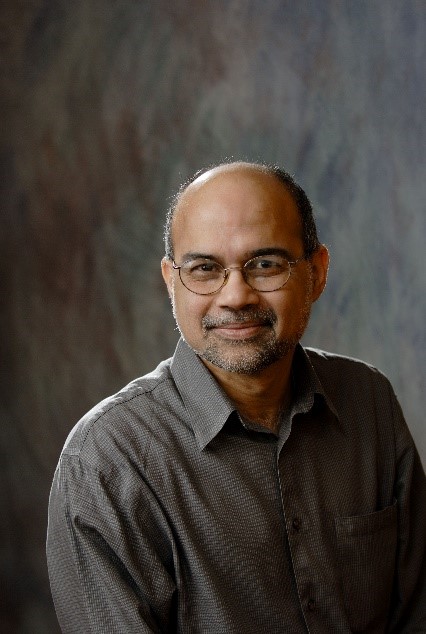
Roots of coarse mesh, or advanced, nodal methods [1] can be traced to “exact finite difference schemes.” After a brief overview of exact finite difference schemes, a nodal scheme will be developed for the scalar convection-diffusion PDE [2].
To address some of the limitations on classical nodal schemes, our efforts have focused on the development of: 1) a modified nodal method for the time-dependent Navier-Stokes (N-S) equations and its parallel implementation [3]; 2) methods for domains with curved boundaries [4, 5]; and 3) adaptive mesh refinement (AMR) capability for nodal schemes. The modified nodal method for the time-dependent, incompressible N-S equations incorporates two major modifications over nodal schemes developed earlier. First, rather than using the conventional continuity equation or the vorticity-stream function formulation, we replace the conventional continuity equation by a Poisson-type continuity equation written in terms of pressure, and retain the momentum equations in primitive variables. The second modification is introduced in the development of the numerical scheme. Here, rather than using only the diffusion term to obtain the homogeneous part of the solution of the momentum equations, a “linearized” convection term—based on previous time step velocity—is also retained on the left hand side of the transverse-integrated equations, leading to a local homogeneous solution for the transverse-integrated velocities in each spatial direction that is a combination of a constant, a linear and an exponential term.
Current work to remove the restrictions on domain geometry is focused on two approaches: 1) hybrid scheme in which nodal methods are restricted to the interior of the domains and along boundaries that are parallel to the coordinate axes, while a second scheme—such as finite element, more suitable for complex boundaries—is used along curved boundaries [4]; 2) iso-parametric mapping approach to transform the hexahedral elements to a simple cube on which traditional NIM can be applied [5].
1. R. D. Lawrence, “Progress in Nodal Methods for the Solution of the Neutron Diffusion and Transport Equations,” Progress in Nuclear Energy, 17 (3), 271 (1986).
2. Rizwan-uddin, “Comparison of the Nodal Integral Method and Non-Standard Finite-Difference Schemes for the Fisher Equation,” SIAM J. Scientific Computing, 22 (6), 1926-1942 (2001).
3. Fei Wang and Rizwan-uddin, “A Modified Nodal Scheme for the Time-Dependent, Incompressible Navier-Stokes Equations,” J. Comp. Physics, 187, 168-196 (2003).
4. Sundar Namala and Rizwan-uddin, "Hybrid Nodal Integral -Finite Element Method (NI-FEM) for 2D, Time-Dependent Burgers’ Equation in Arbitrary Geometries", Proc. of the Int. Topical Meeting on Nuclear Reactor Thermal Hydraulics, 3741-3755, Portland, OR, August 25-29, 2019.
5. Ibrahim Jarrah and Rizwan-uddin, "Nodal integral methods in general 2D curvilinear coordinates - applied to convection–diffusion equation in domains discretized using quadrilateral elements”, Int. J Heat and Mass Transfer 187 (2022) 122559, https://doi.org/10.1016/j.ijheatmasstransfer.2022.122559.
Virtual Education and Research Lab (VERL):
At VERL, we develop models to simulate physical phenomena, and solve them analytically and on high performance computers to simulate all aspects of processes taking place in and related to reactors and nuclear power plants (including neutronics, thermal hydraulics, etc). Recent focus has been on advanced numerical schemes for Computational Fluid Dynamics (CFD) as well as on multi-scale, multi-physics approaches achieved by coupling multiple codes. We also develop virtual, 3D, immersive and interactive models of facilities such as nuclear power plants, control rooms and laboratories, to help design better human-machine-interfaces, facilitate efficient design, and improve education and training. A recent addition to our portfolio is digital instrumentation and control and cyber security in the nuclear industry. This extension is being pursued in collaboration with the cyber security expertise available at the Coordinated Science Lab at the University of Illinois.
Dr Rizwan Uddin is Professor and Head of Nuclear, Plasma, and Radiological Engineering Department; Professor of Computational Science and Engineering; and Director of Master of Engineering in Energy Systems program at the University of Illinois at Urbana-Champaign. His areas of interest include thermal hydraulics; CFD; computational methods development; coupled neutronics and thermal hydraulics; biological systems and general modeling and simulation. With guidance from his undergraduate and graduate students, he has also been exploring the use of computer- and video-games for education and training. Recipient of numerous awards, he is also a fellow of the American Nuclear Society.

